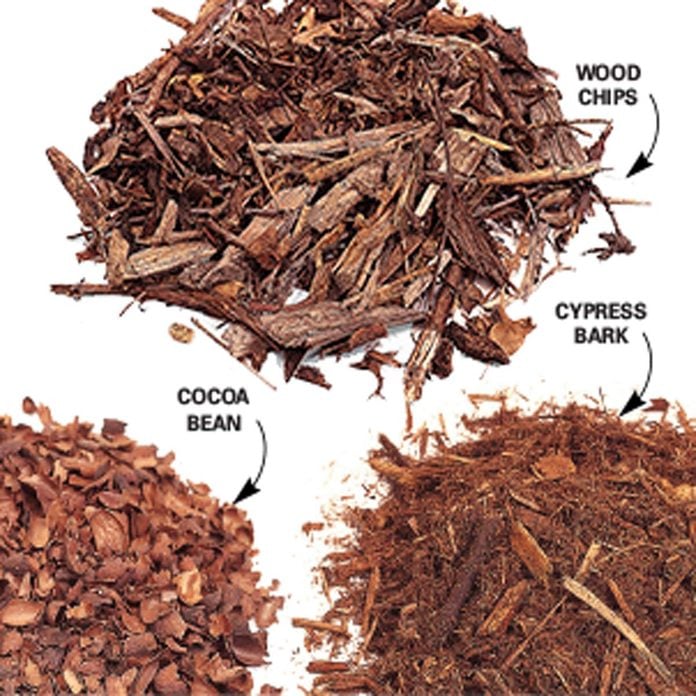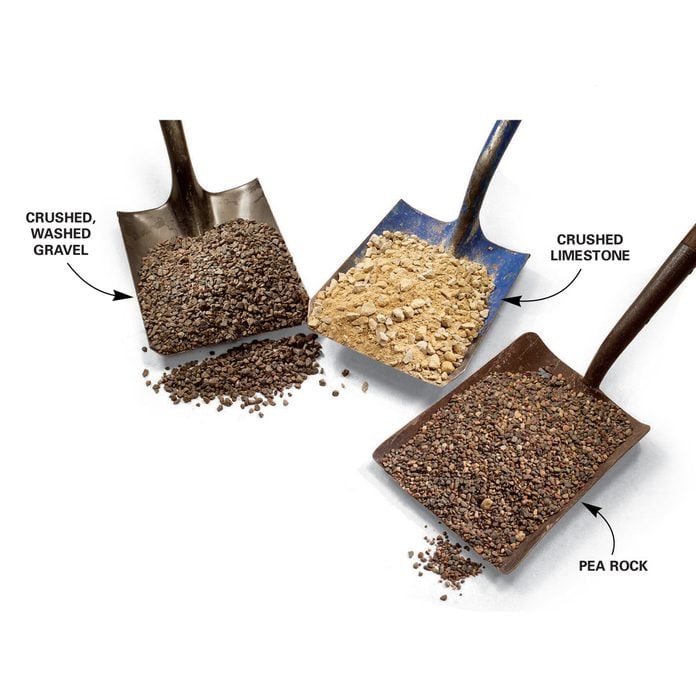Affordable Garden Path Ideas
3
/
15

Family Handyman
Informal Garden Paths and Rock Walkways
This winding gravel path reflects the informality and ease of maintenance of the garden. Mulch and gravel are the cheapest pathway materials you can buy for rock walkways, and they make construction simple, too, making them two of our favorite walkway ideas. All you have to do is remove the sod, roll out landscape fabric and spread the mulch or gravel.
Mulch and gravel paths can be meandering, wood chip–covered trails or carefully planned designs, and they range from casual to formal depending on the design and edging material. You can choose from a wide variety of loose materials including coarse bark, decorative mulch, washed stones and crushed gravel or shells.
4
/
15

Family Handyman
Mulch Walkways
As stated above, the three common types of mulch suitable for garden paths are wood chips, cocoa bean and cypress bark. Since these path materials are lighter than stone, they’re easier to haul and spread. Mulch is also a bit cheaper than gravel or stone pebbles. Remember, though, that organic paths decompose over time, so you’ll have to rejuvenate them every two to five years with new material. Also, don’t use bark, wood chips or mulch for paths that run through areas with poor drainage or that are wet. It’ll lead to a soggy path.
You’ll find bags of mulch at home centers, but for the best selection of organic materials for a path, check your local nursery or landscape supplier. Depending on how big your path is, it may be cheaper to have bulk material delivered than to buy bags. Plan on a 3-in.-deep layer of mulch about 3 ft. wide as an alternative to grass. Call the public works department at your city hall or check with local tree trimming services. They often have piles of wood chips or mulch that are free for the hauling.
5
/
15

Family Handyman
Gravel Walkways
Several types of inexpensive gravel are available for paths. Common types are: crushed gravel, crushed limestone and pea rock. For a path that’s more formal or longer lasting than a mulch path, consider washed gravel, crushed stone or crushed shells. These materials last indefinitely and only need occasional weeding to look their best. If you want to run a wheelbarrow or lawn mower along the path, choose crushed stone rather than smooth pebbles. The jagged edges of crushed stone lock together to form a firm surface. Crushed stone is also less likely to get kicked out into the yard.
Gravel for paths is sold by type and size. Smaller stones, averaging under 1/2 in., are best for paths because they offer more comfort underfoot and pack together better. Visit your local nursery or landscape supply specialist to see what’s available in your area. Gravel is usually sold by the ton. Measure the length and width of the path. Take these measurements to the supplier and ask for help to figure out the quantity of gravel you need. Unless your path is very short, it usually makes sense to have the material delivered. Gravel for a path 3 in. deep and 3 ft. wide will cost about the same as mulch.
Gravel paths do have a few limitations, though. The stones can get tracked into the house, so don’t use them near entries. And gravel paths are a bad choice in areas where you have to shovel snow off them. The gravel can end up in your lawn or flower beds.















![Toni Kroos là ai? [ sự thật về tiểu sử đầy đủ Toni Kroos ]](https://evbn.org/wp-content/uploads/New-Project-6635-1671934592.jpg)


